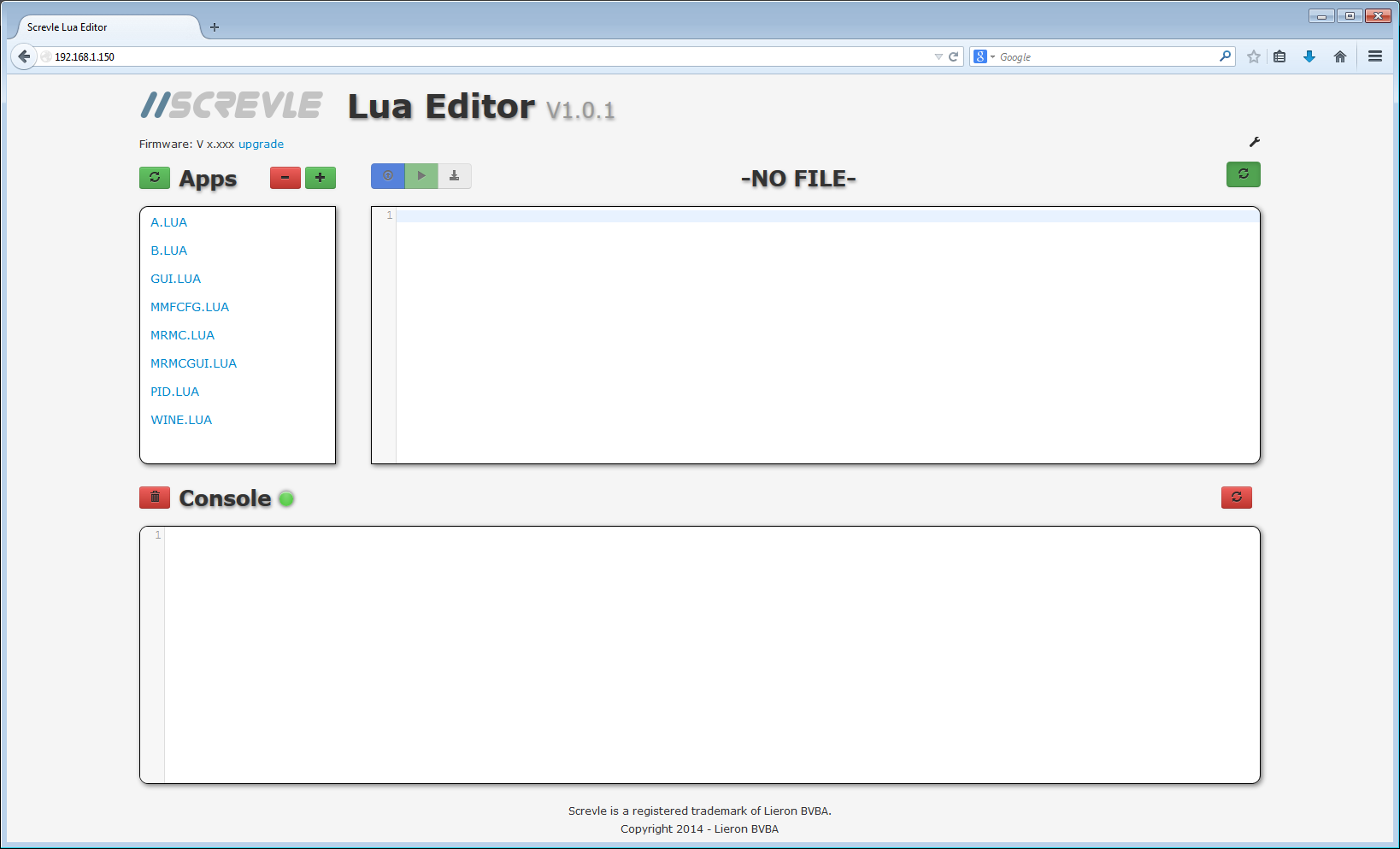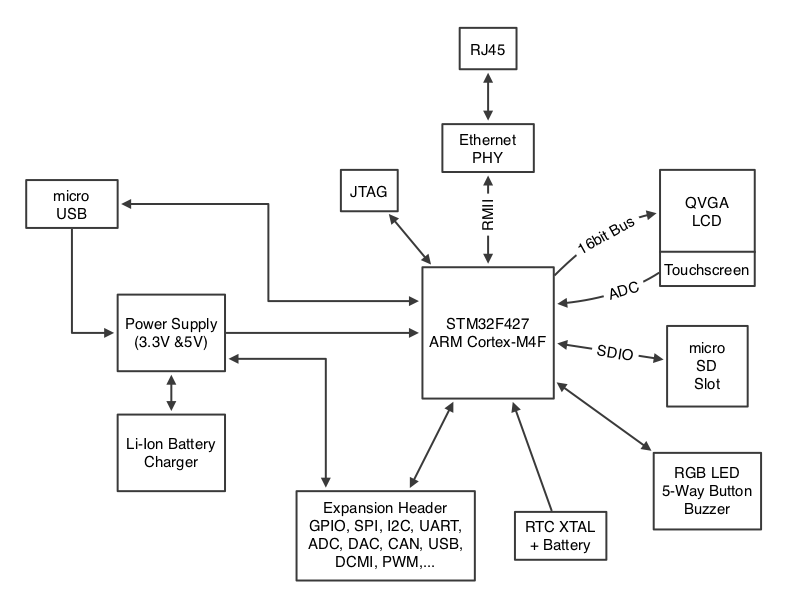Screvle is the result of years of software and hardware development. The goal is an easy-to-use embedded system development platform that allows to quickly make new embedded tools and applications. Using the rich feature-set of the Screvle platform you can build better application in less time.
Screvle can execute Lua scripts stored on the SD card. These Lua scripts have access to all the hardware (GUI, Peripherals, Filesystem, Network,...) and allow to build complete applications without touching C code.
Using the build-in Lua Development Environment, you can write applications anywhere without ever installing a single tool or driver. Screvle features a web-server that provides a development environment for Lua scripts with code-coloring, code-completion and debugging features. No internet access is needed to use the Lua Development Environment and it works from any browser without add-ons.
The same web-server can be used for your application. Build an advanced, dynamic webinterface with Lua Server Pages (read: something like PHP pages but with Lua instead).

Features
- STM32F427 ARM Cortex-M4
- QVGA Display + Touchscreen
- 5-Way Navigation Button
- RGB LED
- Buzzer
- Ethernet
- micro-USB
- micro-SD
- Li-Ion Battery Charger
- Expansion Header
- Power In/Out
- GPIO
- SPI, I2C, UART
- CAN
- ADC/DAC
- ...
- Real-Time Clock Battery
- JTAG
Introduction Video
Architecture
System Overview

Hardware Overview

Open Source Components
- Lua (http://www.lua.org/license.html)
- eLua (http://www.eluaproject.net/)
- lwIP (http://savannah.nongnu.org/projects/lwip/)
- FatFs (http://elm-chan.org/fsw/ff/00index_e.html)
- <to be completed>
 Ronald Vanschoren
Ronald Vanschoren